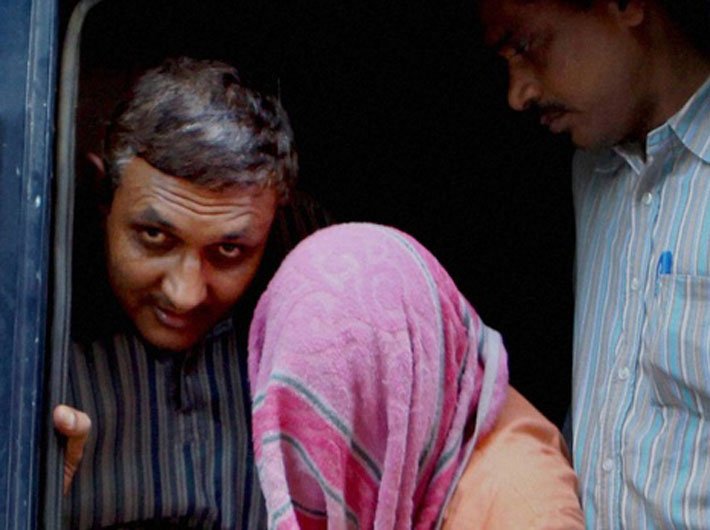Trying 16-year-olds in regular courts by amending the Juvenile Justice Act will be a “blot on this nation’s conscience”, say two juridical experts
The union cabinet’s approval of the Juvenile Justice (Care and Protection of Children) Bill, 2014 has opened a can of worms. While many say the move would act as a strong deterrent, given that several recent cases of rape, including the December 16, 2012 incident in Delhi and the gangrape of a photojournalist in Mumbai’s abandoned Shakti Mills compound in August 2013, child rights groups and activists call it inhuman.
The Bill proposes treating minors older than 16 years as adults if charged with serious crimes, such as rape or murder. It also says if found guilty, such convicts would not be awarded the life sentence or death.
“In case of juveniles alleged to have committed heinous crime, neuro-science research has proven that though the juvenile may have actually committed a heinous crime, the capacity to discern the impact of having made that choice has not fully developed,” say two experts from the National Law School of India University, Bangalore. Edited excerpts from an interview with Arlene Manoharan, programme head, juvenile justice, and Swagata Raha, senior legal researcher, at Centre for Child and Law, National Law School of India University, Bangalore:
How justified is this latest cabinet approval to amend the Juvenile Justice (Care and Protection of Children) Act, 2000, which could allow 16- or 17-year-olds committing heinous crimes to be tried in regular courts?
The ministry is proposing to repeal the existing law, and enact a new law. (But this is) a completely unwarranted move given that the existing law is progressive in many aspects and has a long legislative history behind it. Importantly, the supreme court has also validated the existing legal framework concerning juveniles and ‘serious’ crime in its orders in recent past. It is a hasty response made without the minimum 30 days required to solicit public opinion in keeping with the process of pre-legislative consultative policy.
The bill is regressive in that it is moving away from the existing rehabilitative goals to one of retribution and deterrence, both of which contradict the international standards on juvenile justice. To penalise juveniles as adults would violate the fundamental principle of equality, as juveniles do not neuro-biologically possess the same capacity for decision-making and impulse control as adults, and are therefore not on an equal footing when treated as adults.
Instead of being based on evidence-backed policy, including statistical data, the Bill seems to be aimed at playing to the gallery of the masses who are baying for blood after the Nirbhaya (December 16, 2012 Delhi gangrape-murder) incident.
ALSO READ THE OPPOSING VIEW IN RANJANA KUMARI’S INTERVIEW: "A 16 or 17-year-old offender is not a child"
Those in favour of the amendment argue that if the nature of crime is gruesome one would not send a strong enough message by only sending them to reform homes after conviction. The contention is, these accused should be tried in regular courts. How do you counter that?
In law, culpability is as important a factor as the gravity of the crime. Young adolescents, especially those between 16 and 18 years, as a class are less culpable, as their brains are still developing and psycho-social development is still in progress – a fact proven by research in neuro-science.
Purely punitive solutions to juvenile crime do not work and have negligible deterrence value. Our current model of juvenile justice has failed us because it does not go the distance in healing broken spirits. The victim has little or no say in the adult criminal justice system and the proposed provisions do not advance their interests. The existing juvenile justice system has the potential to provide an enabling framework to promote healing for the victim and the juvenile through restorative justice programs, which have been in vogue in New Zealand, Australia, South Africa, Canada, USA, and several European countries.
We feel the MWCD (women and child development ministry) should urgently examine all existing restorative justice models and begin applying them in the Indian context.
Critics – and you are among them – say the new move, if applied, will hamper the possibility of reforming a juvenile, especially if s/he is as young as 16 or 17. But should we not look at the nature of a crime? The juvenile in the December 16 incident, for instance was barely months before he turned technically adult.
The nature and gravity of the crime is one aspect of the equation and should definitely be considered while responding to juvenile crime. However, can or should that be the overriding factor? Should it be the basis for deciding whether a juvenile stays within a rehabilitative system or is banished to a jail? According to the United Nations Committee on the Rights of the Child, the primary consideration even in cases involving serious offences by children should be the best interest of the child and that considerations of the need of public safety and sanctions “must always be outweighed by the need to safeguard the wellbeing and the best interests of the child and to promote his/her reintegration”.
Should we not look at the present reality – that 16 and 17-year-olds out there are roughing it out and are exposed to lot of criminal activities? What about the changing nature of social and sexual relations in society?
Of course we should make every effort at changing the nature of social relations in our society. We have to change the way impoverished families are treated by the society (and the state) – exploiting them, impoverishing them, and criminalizing them, rather than empowering them to live a life of dignity, equal before the law as any other citizen.
Why is that a majority of juveniles who even enter the JJ system hail from poor families? Should the state not be investing in preventing and supporting children from getting into situations where they are compelled to live on the streets, influenced by adult gangs, exposed to pornography and drugs, and deprived of the care and protection by their own families and communities instead of merely sending such juveniles to adult courts and subsequently to jail or the gallows?
Labour laws put 14 years as the demarcation line. From that angle, how is setting the bar at 16 years too low?
The question relates to children’s capacities to engage in different activities and the impact of engaging in such activities on their growth, development, and right to life. In case of juveniles alleged to have committed heinous crime, neuro-science research has proven that though the juvenile may have actually committed a heinous crime, the capacity to discern the impact of having made that choice has not fully developed. Children in the age group of 16-18 are in a critical development phase – neurologically, biologically, and psychologically.
Moreover, there is already a proposal to amend the Child Labour (Prohibition and Regulation) Act 1986, to increase this demarcation line to 18 years.
How much can we trust the juvenile justice board on its discretion to decide if the brutality of a crime is grave enough for a juvenile to be tried in a regular court?
Though the JJ Act requires that ‘no magistrate shall be appointed to the JJB, unless he/she has received training in child psychology’, it is rare to find this operational in practice. Moreover, JJBs are provided with not more than a couple of days of training during their tenure (and not even before taking up the appointment). Though the Bill empowers JJB to empanel experts to assist them in this very complex task, in reality there is no such proven expertise or supporting tools to enable this assessment with the kind of precision that it requires – given the serious implications of this decision.
Given the subjectivity involved in assessing, it is believed this will entail dilemma and controversy over the board’s recent decisions. How do you react?
This belief is correct. Internationally there is no foolproof mechanism to assess the maturity or culpability of a person. In fact, research in the US has proved otherwise. Prof Dr Shekhar P Seshadri, an international expert from the department of child and adolescent psychiatry, NIMHANS, has also supported this view. Sending even one young adolescent to an adult court, and potentially to life in prison (even for a day leave, alone life in prison without parole), with knowledge that such foolproof mechanisms do not exist anywhere in the world, will be a blot on this nation’s conscience.

